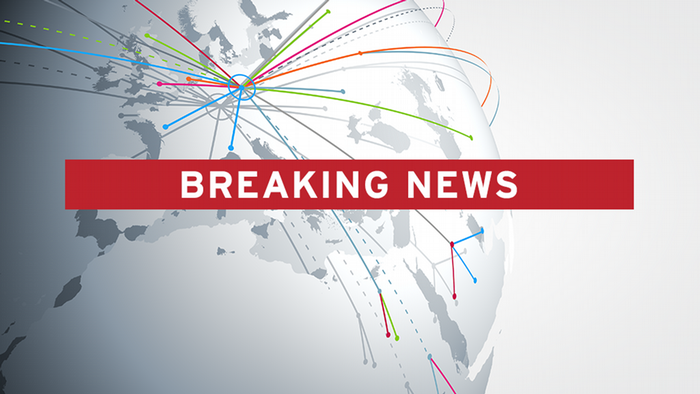German archbishop offers to resign after abuse criticism
1 day ago
Like3 Comments|
3
COLOGNE, Germany — A report commissioned by Germany’s Cologne archdiocese on church officials’ handling of past cases of sexual abuse found 75 cases in which high-ranking officials neglected their duties. The findings on Thursday prompted the archbishop of Hamburg to offer his resignation to Pope Francis.
© Provided by The Canadian Press
The report commissioned by Cologne's archbishop, Cardinal Rainer Maria Woelki, absolved Woelki himself of any neglect of duty with respect to abuse victims
However, Woelki’s late predecessor, Cardinal Joachim Meisner, was accused of two dozen instances of wrongdoing such as failing to follow up on or report cases of abuse, not sanctioning perpetrators or not caring for victims. Meisner retired in 2014 and died in 2017.
Hamburg Archbishop Stefan Hesse, previously a senior church official in Cologne, was faulted for 11 cases of neglecting his duty.
Later Thursday, Hesse posted a video statement in which he conceded that he had made “mistakes” in the past, and said he very much regretted if he caused new suffering to victims or their relatives “through my action or omission.”
“I never participated in coverups,” he said. “I am nevertheless prepared to carry my part of the responsibility for the failure of the system.”
“To prevent damage to the office of the archbishop and to the Hamburg archdiocese, I am offering my resignation to Pope Francis, and I am asking him to relieve me of my duties immediately,” he said.
There was no immediate comment from the Vatican, and it was unlikely Francis would act quickly on Hesse’s offer. At 54 years old, Hesse is more than 20 years away from the normal retirement age for bishops. Francis has previously declined, at least initially, to accept resignations when they were offered to repent for mishandling sex abuse cases, though he has relented after time.
The lawyer in charge of the report, Bjoern Gercke, told reporters in Cologne that his investigation touched on the cases of 314 abuse victims — a majority of them boys under the age of 14 at the time of the abuse — and 202 people accused of abuse in the Cologne diocese since 1975.
The focus wasn’t so much on what the suspects did to the victims, but more on whether the church — former and current archbishops, vicars-general and other high-ranking church officials — responded correctly to accusations of abuse.
Altogether, the report found 75 cases in which eight high-ranking officials neglected their duties to either follow up on, report or sanction cases of alleged abuse by clergy and lay church employees, and failed to take care of the victims.
Woelki infuriated many local Catholics over recent months by citing legal concerns to keep under wraps a first report on how local church officials reacted when priests were accused of sexual abuse. He commissioned the new report — an 800-page investigation based on church files and put together by a German law firm.
Gercke said the first report, by a Munich law firm, also had concluded that the current archbishop wasn't guilty of any wrongdoing. The Cologne archdiocese has the most Catholics of any in Germany, some 1.9 million.
In a first response to the new report, Woelki said the investigation confirmed his fears that high-ranking officials were guilty of not having reported perpetrators and thereby preventing their prosecution.
“My predecessors, too, are guilty — as of today it is no longer possible to say 'We didn’t know,’” Woelki said, adding that he would send the report to the Holy See in Rome.
Woelki said he also would temporarily suspend two Cologne church officials based on the findings of the investigation. One of them, Auxiliary Bishop Dominikus Schwaderlapp, also said he had offered his resignation to the pope. The report found Schwaderlapp neglected his duty to inform and report abuse allegations in eight cases.
German Justice Minister Christine Lambrecht said the report demonstrated anew “what horrific sexual violence children and teenagers had to suffer in Catholic institutions.”
“Child abuse is not an internal church matter, but a crime that must be examined and decided by criminal courts,” the minister said.
Jens Windel, 46, the founder of a support group for clergy abuse survivors, watched a livestream of the news conference about the report on his laptop with other victims outside Cologne's landmark cathedral.
The report, he said, “trivializes the severity of the coverups that took place.”
There has been fierce criticism of Woelki's handing of the previous report. The head of the German Bishops’ Conference, Limburg Bishop Georg Baetzing, last month described the crisis management in Cologne as a “disaster.”
A Cologne court last month announced that it was raising the number of appointments available for people seeking to formally leave the church to 1,500 per month from 1,000 starting in March, amid strong demand.
Revelations about past sexual abuse have dogged the church in Germany and elsewhere for years.
In 2018, a church-commissioned report concluded that at least 3,677 people were abused by clergy in Germany between 1946 and 2014. More than half of the victims were 13 or younger when the abuse took place, and nearly a third of them were altar boys.
In January, a new system drawn up by the church to compensate abuse victims took effect. It provides for payments of up to about 50,000 euros (nearly $60,000) to each person. Under a previous system in place since 2011, payments averaged about 5,000 euros.
___
Kirsten Grieshaber reported from Berlin. Geir Moulson in Berlin and Nicole Winfield in Rome contributed to this report.
Kirsten Grieshaber And Daniel Niemann, The Associated Press






 © Provided by The Canadian Press
© Provided by The Canadian Press



